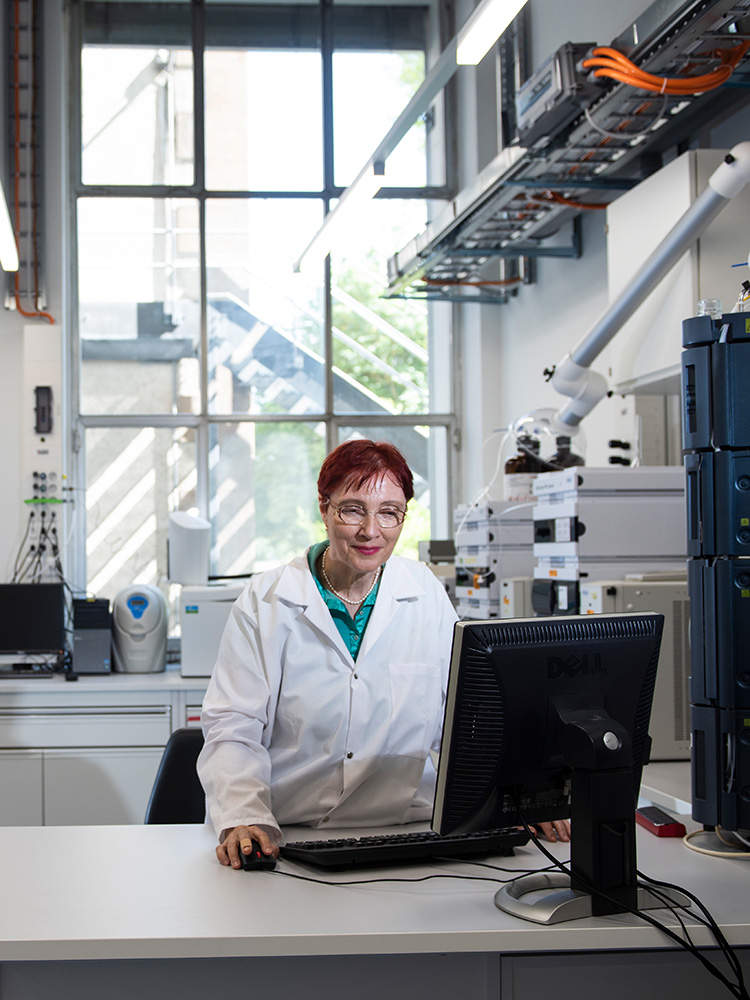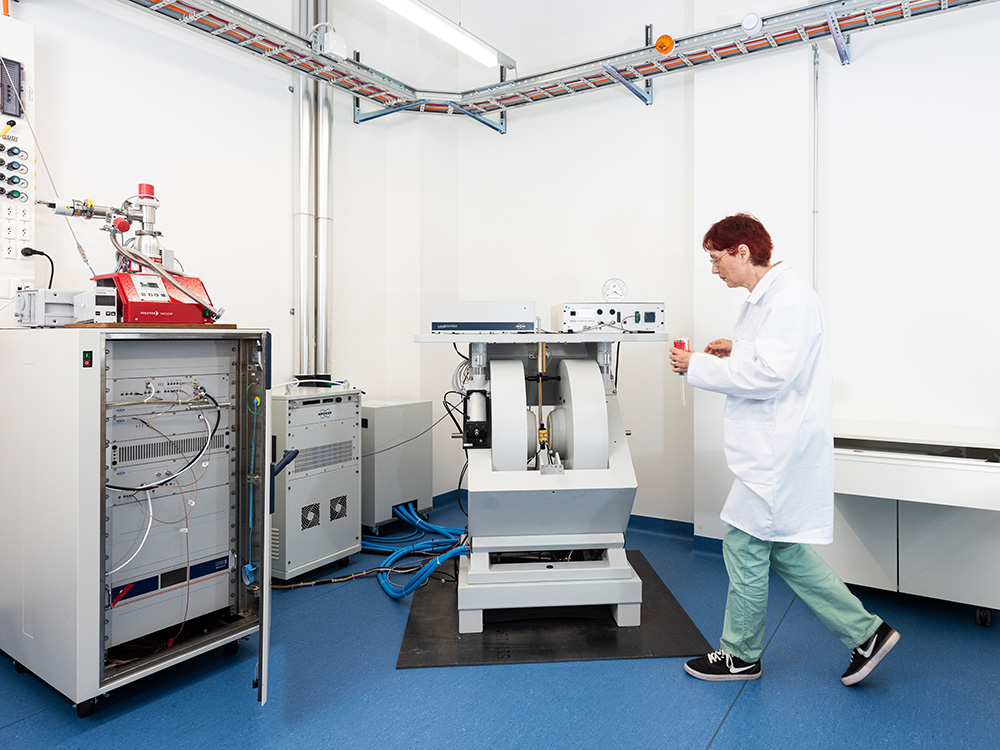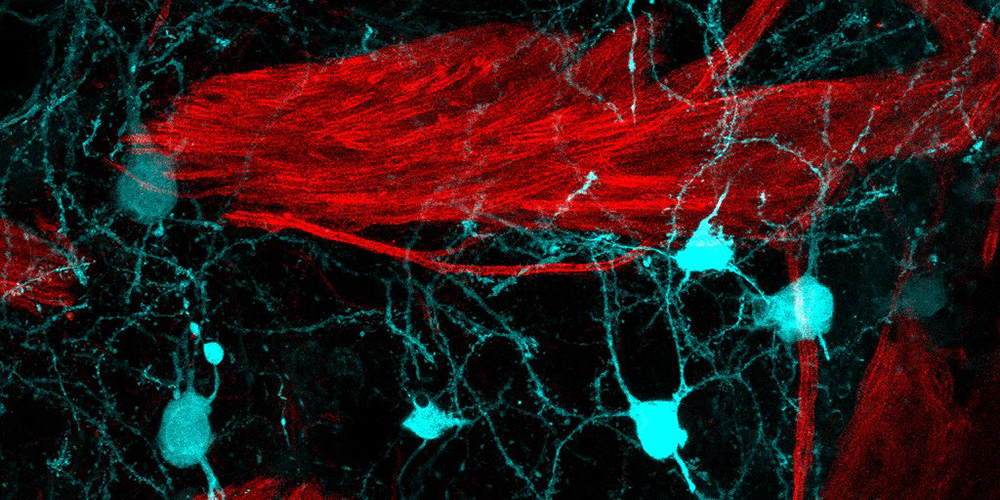Innovation in Miniature Format
In her search for novel applications, physicist Cornelia Palivan combines artificial materials with biological substances. Among other things, this results in tiny molecular factories for the therapy and diagnosis of diseases.
In her research, Cornelia Palivan constantly moves at the interface between chemistry, physics and biology. Because the systems she develops – for applications in medicine, food safety or for reducing pollutants in the environment – are only a few millionths of a millimeter in size and in this size range the boundaries between the disciplines become blurred.
Interdisciplinary cooperation is therefore the most important factor for her research, says Palivan. In Basel she has found the ideal environment for her work: At the Swiss Nanoscience Institute Basel, where for example scientists from the University of Basel, the University Hospital Basel, the University of Applied Sciences and Arts Northwestern Switzerland (FHNW) and high-tech companies from the region work together on innovative projects. Palivan's research group is also part of the «Molecular Systems Engineering (MSE)» National Centre of Competence in Research. In addition, Palivan cooperates on an international level, e.g. with the Department of Pharmacy at the University of Copenhagen or with biomedical engineers at the National University of Ireland.
In addition, she can draw on her own broad experience: After studying physics, she first worked in pharmaceutical development. This was followed by a doctorate in physical chemistry at the Universities of Geneva and Bucharest, as well as projects at the University of Basel and ETH Zurich. Since 2004 she has been working at the Department of Chemistry at the University of Basel, where she was appointed Titular Professor of Physical Chemistry in 2013.
Tiny particles – great benefits
In her projects, Palivan pursues a variety of different approaches. They all have in common that they combine biological molecules such as DNA, proteins or also cells with synthetic materials. The systems developed in this way are for example applied to surfaces: an antimicrobial coating on hip implants can prevent dangerous infections, and stickers with tiny biosensors indicate whether food is still edible.
Within the framework of the National Centre of Competence in Research MSE, Palivan works primarily with so-called vesicles. Such vesicle-shaped containers occur naturally in our cells, where they transport substances. The replicas Palivan creates from synthetic materials are much more robust than their natural models. Drugs for example can be stably packaged in them and transported through the body to the source of the disease – the prerequisite for a precise and effective therapy with few side effects.
Diagnosis and therapy at the same time
The practical application this technique could have is demonstrated by a new approach to treating arteriosclerosis, developed by Palivan together with the Department of Biosystems Science and Engineering at ETH Zurich. For this purpose, the researchers merge diagnosis and therapy in one step by coupling two different types of vesicles that together bind to the affected sites in the arteries: One vesicle is loaded with a fluorescent substance and makes the calcified areas visible; the other vesicle contains an enzyme that produces the messenger substance dopamine and thus prevents the formation of further calcifications. Initial tests show that the method works well in the test tube – even if its use in humans is still a long way off.
For Palivan, the above mentioned is just a first example of the potential applications of such paired vesicles: «We can adapt this system very quickly to different needs by simply exchanging the contents of the vesicles». Instead of a fluorescent substance the first vesicle could for example contain a contrast agent and thus make the docking sites visible in the MRI. Likewise, the second vesicle could transport various other therapeutic substances.
Mentor for the next generation
The progress in her field would not be possible without the constant exchange of ideas within her team, says Palivan. That is why she is happy to pass on her experience to the next generation. For example, she says, researchers must learn to always have a plan B ready and to draw valuable conclusions even from failed experiments: «Even if everything is planned meticulously, it never turns out exactly what you want. Nature is usually much more complicated than we think».
Particularly important to her is that aspiring female researchers can continue their careers even after starting a family. She herself has two grown up children and was only able to continue her research thanks to great support from her personal environment. She therefore pleads for better solutions in politics and society: «If young, talented women don’t return to work, our country loses a huge potential».
Biologically inspired nanofactories
The NCCR «Molecular Systems Engineering» has been based at the University of Basel and ETH Zurich since 2014. It is funded by the Swiss National Science Foundation (SNSF) with over 35 million Swiss francs. The aim is to develop molecular mini-factories inspired by biological processes. To this end, biological and synthetic systems and substances are combined. These tiny production chains are to be used primarily in the therapy and diagnosis of diseases, but also for the production of high-quality chemicals. Research groups from biology, physics, chemistry and engineering are involved in the interdisciplinary approach. There are also numerous international collaborations, amongst others with research groups in Germany, France, Japan and the USA.
Further Links
- Department of Chemistry at the University of Basel
- NCCR Molecular Systems Engineering
- Swiss Nanoscience Institute
- Department of Biosystems Science and Engineering at ETH Zurich
- Departement of Pharmacy, University of Copenhagen
- Biomedical Engineering, National University of Ireland Galway
- Cornelia Palivan in the Uni News




